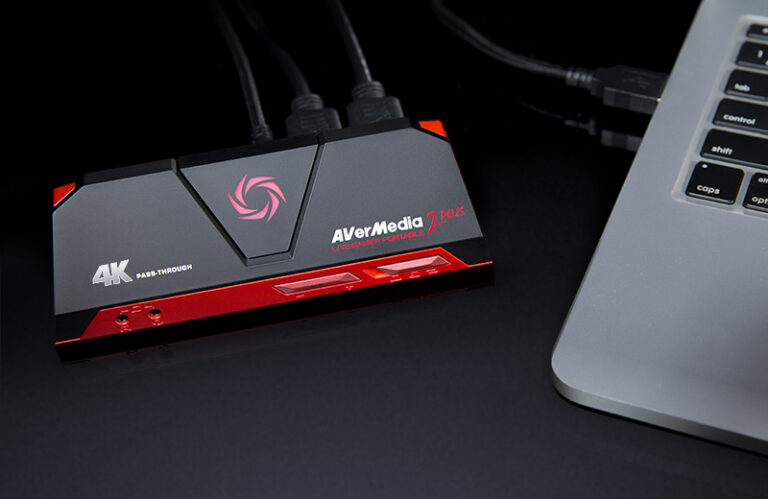How to use a systematic approach to increase the efficiency of the purchasing unit in a company
Hi all! I am Anton Filimonov, head of IT projects at the First Freight Company (FGK). In our work, we actively use a systematic approach that allows us to make optimal choices and implement changes to solve business problems. In this article I have collected practical advice for those who have encountered difficulties in their business. As an example, let’s take the solution to the problem for the Freight One’s procurement block.

Three types of business problems: from simple to complex
Learning Objectives
Those problems that can be solved using a given algorithm – substitute the formula. As a rule, a list of initial data – “given” – is there from the very beginning, and all the information is used for the solution. Very similar to problems from school.
In life: Calculate how many days are left until payday.
In a business environment: calculations of loan debt or book value of fixed assets.
Data analysis and evaluation
This is a more difficult task: to find the answer, it is important to use the skills of analysis and drawing conclusions – initial data alone will not be enough.
In life: understand when it's time to feed the cat. If your pet is rubbing against its legs and the bowl has been empty for a long time, it’s time to replenish food supplies.
In business: evaluate marketing indicators, for example, analysis of consumer preferences.
Problems with open questions
The most difficult, but the most common in business. To give the correct answer, you need to take into account many criteria and factors: some you will have to look for and analyze yourself, others you will have to discard.
In life: choose a job – to do this you need to evaluate the company, understand what criteria are important to you.
In business: developing a strategy for developing or improving the company’s purchasing function.

Seven Steps to Solving an Open Question Problem
The last type of task requires a certain approach and way of thinking to develop informed decisions (also called recommendations). In conditions of uncertainty, relying only on past professional experience or intuition when solving such problems is unproductive and often even dangerous. This can lead to several irreversible consequences:
First, the decision will likely not be based on an analysis of all possible options. It is possible that some important factors will be missed. This will lead to a desynchronization in the priorities of stakeholders.
Secondly, the developed solution will not take into account all available facts, which will significantly complicate its justification and acceptance by the team, since it will be extremely labor-intensive to prove the correctness of certain parts of the solution.
Finally, implementing recommendations based solely on intuition or experience may result in the company not achieving its goals and limited resources being wasted on “waste work.”
In order to avoid such situations, the “Seven Steps to Solving Business Problems” approach was formulated:

How do we apply a systems approach? Freight One Procurement Block Case
Attention: data is distorted due to confidentiality!
At Freight One, we actively use a systematic approach to develop ideas for future projects. Understanding that most projects fall into the third type of problem (tasks with an open question), the use of a systems approach allows us to select and justify effective solutions and implement changes that directly relate to and solve the identified business problems.
The problem we solved for Freight One's procurement block is a clear example of the application of this approach. First, let's understand some basic concepts related to procurement activities:
procurement is a service function of the company;
at the input: the need for goods and services from the company’s business units;
output: supply of specific goods and provision of services to business units;
the main purpose of procurement is to satisfy the need, to find a source of supply;
the value of procurement work is the minimization of Freight One's acquisition costs while meeting SLA requirements for processes (just-in-time procurement, with a minimum cycle time for different categories and a maximum positive difference between the market and actual purchase price).
Situation
World experience showsthat the share of procurement costs in any company, including Freight One, is 65–75%: in our country they account for 71% of all expenses. Main areas: purchase, rental and repair of rolling stock, oligopolistic purchases of some spare parts for it and competitive purchases for core and non-core activities.
As we consider the area of competitive procurement, we note several observations:
— the struggle between potential suppliers creates market price;
— the purchase price can be reduced due to economies of scale and strength of the buyer, as well as the activities of the purchasing unit;
— the positive difference between the market and actual cost of purchased goods and services is a financial expression of the reduction in Freight One's costs due to these factors. This difference is called spread.
Complication of the situation
Based on the results of the next quarterly report, the deviation of the current spread values from the best practices and goals of the block: 40% for tenders, 20% for sales and 50% for spare parts.
Step 1 – Identify the Problem
Failure to achieve target spread levels is expressed in the final actual cost of purchased services and goods. The lower the spread, the more costs a company has and the lower its EBITDA (earnings before interest, taxes, depreciation and amortization).
To describe the problem statement and some of its initial data, we use the PSW tool – Problem Statement Worksheet or “problem description template”. In this form, we have the opportunity to fix all the primary agreements, constraints for the solution space and agree on the criteria for success.

Step 2 – structure the task
The problem has been identified, we begin to find a solution.
A famous saying goes: “An elephant must be eaten piece by piece.” At this stage, it is important for us to divide the problem into its component elements, delve into its context and understand the main drivers. We carry out structuring according to the VISI principle (MECE) – all elements of the structure of one level must completely describe the higher level and not intersect with each other.
Since we are dealing with an “open question” type of problem, the solution algorithm must be invented independently as part of the structuring process. Developing a solution algorithm is called “creating a framework” for a problem.
Let's look at how to achieve our goals in the context of procurement practices.
Since the problem statement (PSW) is about achieving EBITDA goals, it would be more logical (and closer to the VISI approach) to consider factors on the revenue side and on the cost side. Considering that the purchasing block is a service function that makes the company’s costs more efficient, we will not consider market and revenue factors.
On the “expenses” side, we can describe the reduction goal through the spread of the purchasing position, the number of such positions, types of purchases and fulfillment of the SLA with the business (as a general limiter).
Consistent decomposition of factors will allow us to create a decision tree for our task. And understanding the types of procurement will allow you to cover all possible categories from the middle office.

We received a comprehensive decision map and did not miss anything important. You can now work with this further!
Step 3 – Prioritize
Prioritization is an important step towards developing solutions. We understand that it is impossible to qualitatively analyze the entire decision tree, so we will set priorities. This will save the team time and develop the most targeted solution to the problem.
We took the first step to prioritizing at the stage of identifying the problem – we excluded from consideration the front office, which is engaged in non-competitive procurement. Its processes are different from the middle office and are mainly focused on implementing category strategies and working with oligopolies.
The second step is to look at the resulting decision tree and try to focus on its elements. Since achieving cost reduction goals is true for any purchasing category (bottom branch of the tree), we can weigh these types. To do this, we will use an express assessment of purchase volumes, and we will request data in the block itself based on the years 2021–2023.
Based on this assessment, we will set priorities:
First priority (covers 86% of the total volume):
○ tenders (simple and complex) – 67% of the total procurement budget
○ spare parts for rolling stock other initiatives – 19%
Second priority:
○ autologistics — 10%
○ consumables – 4%
Step 4 – organize the team's work
The structure will not only allow us to work out the details of the problem and set priorities, but also distribute responsibility among the project participants. Taking into account the structure and identified priorities, we will include in the project group:
● purchasing director (key stakeholder in all work, customer);
● head of procurement methodology and analytics (functional customer, single responsible person in the project);
● change leaders – procurement block employees responsible for purchasing categories and operational efficiency within these categories:
Head of the Operational Procurement Department (tenders);
Head of the Strategic Procurement Department (spare parts);
It is also useful to involve colleagues to work on the second priority – the heads of departments in charge of auto logistics and consumables.
Constant assistants in this work will be a process analyst and architects of systems where the steps of procurement procedures are performed.
Step 5 – Collect and Analyze Data
Facts are your friends (c). The solution to any problem must be based on facts. Facts compensate us for our lack of experience and intuition. Company reporting is a rich source of information about what is happening in the processes and areas of activity that we analyze.
Let's turn to our structure, since it is a kind of map for collecting and analyzing data:
We will collect data on the volume of purchases – the number of procedures, the actual and market value of items;
Let's calculate the current spread values and look at deviations based on best practices;
Let's collect information and analyze the operating model – we use the Kaizen practice “Gemba”.
Kaizen practice tells us that in order to fully understand the situation, it is necessary to come to the “gemba” – the place where the work process is performed, where we can collect all the facts and information about its implementation. In consulting, we know this approach as “workday photography.” Let's use this technique and take a closer look at the purchasing process.
In the structure, we reflected that the formation of a negotiating position determined by the forces of the customer and supplier is determined, among other things, by process factors:
Availability and volume (labor intensity) of processing operations in procurement:
○ administration of the procedure as a whole;
○ collection of needs, verification and recording of technical specifications and initial procurement conditions, including approvals in the EDMS;
○ collection and transfer of CP for evaluation;
○ rebidding;
○ formation of final protocols and completion of procurement procedures.
The presence and volume (labor intensity) of value transactions:
○ attracting someone to participate in the procedure and working with objections (retention);
○ negotiations;
○ search for the price bottom (analysis of TCO and cost);
○ indirect reduction in price of purchased items based on cost analysis;
○ optimization of supply chains (for spacecraft, for spacecraft suppliers and for suppliers of raw materials to spacecraft suppliers);
○ improvement of other procurement conditions (deferred payments and other conditions).
A snapshot of the working day shows that processing operations take on average 2.1 FTE / year for all procurement cycles. These operations are performed in different information systems – MS Outlook, SAP S4, OpenText and DocsVision, which are not interconnected. The volume of these labor costs could be directed to the value side of procurement – negotiations, price analysis and optimization.
Steps 6 and 7 – synthesize what you found and make recommendations
Processing operations take up nearly two FTEs of valuable purchasing work. Freeing up these costs will allow you to focus on value-based operations and dealing with a competitive market. This, in turn, will ensure that our spreads are met.
It is possible to reduce the volume of processing in two ways: to abandon operations completely, transferring them to outstaff, and to increase the depth of automation by moving to a new level of execution of these processes.
We will take a hybrid approach: we will transfer part of the processing costs to outstaff and ensure automation of the remaining part – we will increase the connectivity of data and systems, eliminate duplicate scenarios and provide an end-to-end E2E procurement process for selected categories.
Now we can formulate a business project aimed at increasing spreads through organizational transformation of processes and the implementation of IT solutions.
conclusions
The use of a systematic approach is a justified solution for problems formulated with a high degree of uncertainty. Consistent movement within the framework of the approach protects us from the main mistake – “jump to conclusions bias”, that is, making decisions based on incomplete and contradictory information.
It's best to spend the extra team effort on elaboration, analysis, and recommendations that actually address the original problem.




